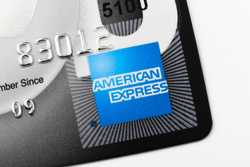How to Get Out of Credit Card Debt


Our evaluations and opinions are not influenced by our advertising relationships, but we may earn a commission from our partners’ links. This content is created by TIME Stamped, under TIME’s direction and produced in accordance with TIME’s editorial guidelines and overseen by TIME’s editorial staff. Learn more about it.
Carrying credit card balances can be very tough on your finances. Follow these five steps to pay off that debt and secure your future.
Paying off credit card debt helps increase your financial security, improve your credit score, and avoid interest charges. If you have a bit of income left after paying your monthly bills, you can clear your credit card debt with this basic plan.
The first step is to check your credit report, which you can do for free once a year courtesy of the federal government at AnnualCreditReport.com. The three main credit bureaus—Equifax, Experian, and TransUnion—also offer free credit reports and scores, as do some banks. If you aren’t eligible to get a free report, you can purchase one.
The report should give you a fairly complete picture of your debts and payments. However, if you have any creditors that don’t report their payment history to the credit bureaus, you won’t see those debts.
If you don’t have one, you need to create a simple budget. It’s easy: Start with your monthly expenses. List your mandatory payments, such as rent or mortgage, other loans, emergency savings, and basics, such as food and utilities. Also include the minimum payments on your credit cards. Next, add them all up.
Now list every source of your monthly income: take-home pay, cash flow from self-employment, investment income, side gigs, etc. Add all of that up too.
Subtract your monthly expenses from your monthly income. This is what’s available to you for credit card debt repayment. Plan on using a substantial part of this money to pay down your card balances.
Your “hit list” should consist of all your credit cards. Write down the balance, minimum payment, and interest rate for each. Sort this list to determine which card to pay off first. Order your credit cards in one of two ways: by interest rate, from highest to lowest, or balance, from smallest to largest.
You need to be paying more than just the minimum monthly amount on each of your cards. This includes paying off all new charges for the month. No plan will work if you keep adding to your balances. In addition, you should pay whatever extra you can afford.
There are two popular methods for credit card debt repayment: the snowball and the avalanche. The snowball is right for people who need a little extra motivation, but the avalanche saves the most interest.
If you go with the snowball method, you’ll make your minimum payment on each credit card plus any new charges. In addition, you’ll target the account with the smallest balance and direct extra money toward paying it down.
When you pay off that first balance, you might find it motivating to have a tiny celebration, such as an ice cream or a cocktail—something inexpensive. Then take aim at the new smallest account. You’ll have more money available to eliminate it, because you won’t have that first payment anymore.
The avalanche method works the same way, except you start with the account that carries the highest interest rate rather than balance, then the next-highest, and so on. Keep killing off one balance at a time and responsibly celebrating your wins. Review your credit scores as you go, because they will probably improve, and it'll feel great.
By the time you pay off your credit cards, you should have developed some excellent financial habits: knowing your budget, living within your means, and paying on time. You should also have a better credit score. Now that you’re not paying high amounts of interest to credit card issuers, you can go from surviving to thriving.
You should now have room in your budget for some extras. Start with saving for retirement, your children’s education, and any other necessary goals. Only once you’ve allowed for your goals can you throw in a few well-deserved goodies for yourself and your family.
Finally, evaluate your credit cards to make sure that they give you the best value. If you don’t have a rewards or cash back card, consider getting one, like Citi Double Cash—it’s free money, after all.
The worst thing you can do is ignore debt that you can’t afford. If you don’t have enough income for our basic plan, there are other sources of help available, from debt consolidation to bankruptcy. Here are a few options:
Debt consolidation has its pros and cons, but it can reduce the interest rate on your debt, freeing up more cash for clearing balances. You may be able to consolidate with a personal loan (such as this one from Upgrade), a home equity loan or line of credit, or a balance transfer to a credit card with a lower annual percentage rate (APR).
If you get a new credit card with a 0% intro APR for a sufficient period (generally offered anywhere from 12 to 21 months), you can use balance transfers to move your unpaid debt from cards with high interest rates. The important thing is to be able to pay the debt off before the intro period ends; otherwise, your APR will almost certainly change to a high rate, and you’ll be back paying a lot of interest.
A debt management plan is administered by a credit counseling agency (choose a nonprofit if you can). It works with credit card companies to help people zero their balances in five years or less by negotiating concessions, such as lower payments and interest rates.
You can sometimes negotiate an agreement for partial debt forgiveness, usually in exchange for a lump-sum payment, either by hiring a professional service or attempting the negotiation yourself. It’s a risky tactic with no guarantee of success, but it may be right for some people.
Declaring bankruptcy is a drastic solution. You’ll pay filing fees to the court system and likely have to hire an attorney. You may also have to surrender assets or pay into a bankruptcy plan for a number of years, generally three to five. Furthermore, the amount you’ll pay will be set by the court and is nonnegotiable.
Credit cards can make managing finances easier and provide some valuable benefits, but only if you use them responsibly. Moreover, as credit card interest rates are usually higher than other types of consumer debt, such as a personal loan or mortgage, carrying it can be particularly expensive, and that is not responsible money management. Avoid the following errors:
Amassing credit card debt generally doesn’t happen overnight, so getting out from under it will take time too. One of the most effective methods involves making minimum payments on all cards except one card that you zero out as fast as you can. Then pay off another one and another one until your debt is gone. It’s crucial not to add to your balances while trying to pay them off. If you can’t afford to repay your balances, seek professional help.
This depends on how much income is available for debt repayment, how high your balances are, and how dedicated you are to getting rid of them. If you can’t clear your balances in five years or less, many experts recommend that you seek credit counseling.
The primary ones would be to find a better-paying job, work additional hours, add a side hustle, or all three. You can also sell assets you don’t need and rent out part of your space and/or some of your stuff.
Yes, either through debt settlement or bankruptcy.
Settlement is the less onerous of the two. If you can offer a significant lump sum to your creditors, they may be willing to accept it as payment in full. Generally, creditors aren’t willing to negotiate until you fall behind with your payments, and there's no guarantee that they’ll work with you. Expect your credit score to take a hit, and forgiven amounts may be taxable. However, data shows that when debts are settled, on average, creditors forgive about half the balance.
Bankruptcy involves the court system and should only be used as a last resort. It will stay on your credit report for either seven or 10 years, depending on the type of bankruptcy you declare, and it can result in a significant loss of personal assets, so it’s not to be chosen lightly. However, it can lead to discharging most, if not all, of your debt.
The information presented here is created by TIME Stamped and overseen by TIME editorial staff. To learn more, see our About Us page.



